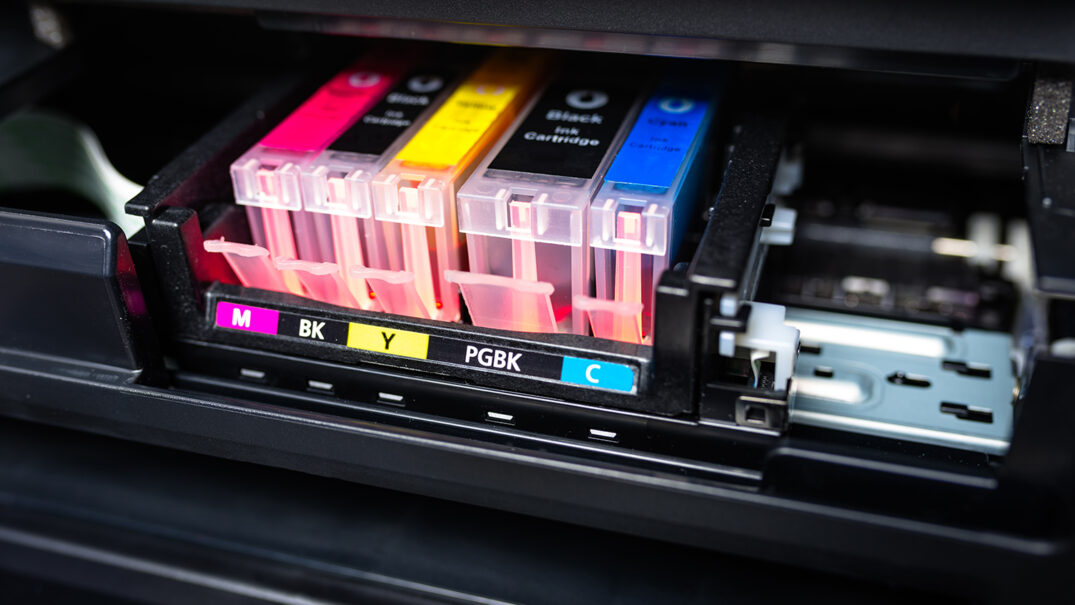Drop on Demand printing is expected to be the fastest growing inkjet sector in 2021! The benefits of this process range from flexibility and functionality to lower downtimes and mass personalisation. So it is time for us to take a closer look at this emerging inkjet technology.
As announced in our blog post “Inkjet Printing Trends to Watch in 2021”, we are dedicating its own article to “Drop on Demand” (DOD) technology and dive into its functions, areas of application, advantages and future prospects. Let’s go!
What is the “Drop on Demand” Technology?
First things first: What does “Drop on Demand” actually mean? You’re most likely already familiar with the term “on demand” from online video libraries or other online service features. It means that you only pay for what you actually use. However, Drop on Demand technology works similarly and is based on the inkjet principle, which in turn is divided into thermal and piezo inkjet. The concept behind it is what gives this technology its name: Ink is only fed through the print head when a print dot is to actually be set, in other words, on demand. With Continuous Inkjet (CIJ), on the other hand, the inkjet is generated continuously, regardless of whether or not marking is to take place. But back to the Drop on Demand principle which is also applied in both thermal and piezo inkjet printing:
In front of the nozzle is a chamber that is filled with ink. By reducing the volume of this chamber, the ink is ejected through the nozzle. This principle is the same for both thermal and piezo inkjet printing. The difference only lies in the technique used to achieve the volume reduction. In thermal inkjet, the liquid inside the ink leads to the explosive formation of a vapour bubble, which in turn presses the ink through the nozzle. Piezo printers push the ink through the nozzle with the help of a piezo element instead.
Pigment Ink vs. Dye Ink
Print novices will think that inkjet printers are mainly used in small or home offices, but the range of applications is in fact very wide. For example, it’s also used for industrial purposes for printing cardboard, plastics or packaging.
As previously explained, DOD printers rely on individual droplets generated on demand, which makes the technology significantly cheaper – only what is needed is produced.
But before we take a closer look at the advantages of Drop on Demand printing, let’s keep an eye on the different inks that can be used in this operation: pigment ink and dye ink. With the former, pigments are suspended into a liquid which is what gives the ink its color. Pigment ink is particularly long-lasting and achieves stronger color results that are more resistant to water. In return, dye-based ink offers a wider color range. The inks consist of dye molecules that are dissolved in the ink fluid.
Prospects for the Future
Printers equipped with Drop on Demand inkjet technology offer many benefits like flexibility and functionality. Moreover, DOD printheads can create gradients and greyscale effects at effective resolutions of 1200 dpi and higher. If fast-curing UV LED-based inks are used, Drop on Demand inkjet printers can achieve throughput rates at very low cost.
As the Grand View Research by Ink World Magazine points out, the industrial end-user segment is expected to grow up to 6,9 % which is attributed to the higher operational speed of industrial inkjet printers. With this, coding and marking of products is enabled with high velocity. Additionally, manufacturers can design their products in different shapes and sizes because the nozzle can be positioned at a significant distance to the product. Especially for the packaging industry, large format inkjet printers with Drop on Demand technology offer many opportunities to print high-quality labels and packages. These printers not only cause low printing costs but are also flexible and have a fast turnaround time.
As Kao Collins summarises in her article for Ink World:“There is little doubt about the future growth and adoption of industrial inkjet printing across various markets.”
The environmental awareness, for example, is rising and companies are encouraged to minimise their waste and simultaneously maximise efficiency. Drop on Demand opens up many possibilities in this area and will therefore be an important technology in the future of print.
We will have an eye on this inkjet technologie and keep you updated. What do you think, what impact could Drop on Demand have in the future?
Post time: Mar-16-2021

